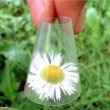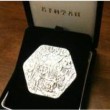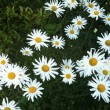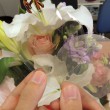How to prepare result sentences? 結果文章の書き方
minor revised (ranking & add “hard-2”) by Nogi 2020/05/31
text by Nogi 2020/05/30
When you prepare the daily progress report, you must prepare “materials & method” and “result”.
“Discussion” is not require in it, because you sometimes don’t get enough data.
Moreover, when you make clear descriptions in “material & method” and “results”, they will bring us good discussions automatically.
You have to describe the following topics in the result sentences,
“What kinds of results did you get from your experiments?”
“What kinds of trends are there?”
However, I think you don’t understand well what I say.
Therefore, let’s understand “what is” & “how to write” the result sentence from the published article!!
日々の進捗レポートを作成する際、「実験方法」と「結果」は必ず記載しましょう。
考察に関する文章は不要です。(レポート作成時に、十分なデータが集まっていないことがありますので。)
また「実験方法」と「結果」をしっかり記載していればば、考察の文章は自然に浮かび上がってきます!!
結果に関する文章は、次のようなことを記載してください。
「あなたの実験で、どんなデータが得られましたか?」
「それらデータには、どんな傾向がありますか?」
しかし、こんな説明では、いまいちピンときませんよね。。。
そこで、学術論文を参考に、結果の文章とはナニか?どうやって記載するか?を学びましょう!
【Example 例題】
These sentences are from the below URL.
これら文章は、以下URL論文からの抜粋です。
https://www.nature.com/articles/srep41590
[Original sentences for Fig. 1]
The cellulose nanopaper was fabricated by drying the cellulose nanofiber/water dispersions. When the water dispersion with 15-nm-wide cellulose nanofibers was dried, the cellulose nanofibers densely packed together, and air voids inside the sheets were removed4,5. As a result, the high-density cellulose nanopaper (1.48 g/cm3) became clear transparent with a small haze of 4.2% (Fig. 1 left). Because native cellulose nanofibers are hydrophilic, they do not homogeneously disperse in organic solvents such as ethanol, methanol, and acetone26. Therefore, after drying the nanofiber/organic solvent suspensions, numerous air voids remain inside the sheet. Because the air voids cause light to scatter, the nanopaper become translucent or white appearance. For example, when the cellulose nanofiber suspension with the mixture of 50% ethanol/50% water were dried, the density of cellulose was 1.15 g/cm3, and the nanopaper was translucent (haze: 49.3%) (Fig. 1 center). Increasing the ethanol to 90% decreased the density to 0.81 g/cm3, and the appearance was white translucent (haze: 90.1%) (Fig. 1 right). However, all the samples maintained high total transmittances of 90.3–90.7% because the incident light was transmitted with or without light scattering. Although the samples were fabricated with the same width of cellulose nanofibers, the density of cellulose nanopaper changed their appearance from clear transparent to hazy transparent, which has been reported in previous studies9,22,23. However, the low-density nanopapers show low mechanical properties because these characteristics are related to highly dense cellulose nanofibers. Thus, we propose a method of customizing nanopaper haze to maintain their high density.
Only the result sentences were picked up the below, which explains data.
以下に、データを説明した結果文章だけをピックアップしました。
# the high-density cellulose nanopaper (1.48 g/cm3) became clear transparent with a small haze of 4.2% (Fig. 1 left).
# when the cellulose nanofiber suspension with the mixture of 50% ethanol/50% water were dried, the density of cellulose was 1.15 g/cm3, and # the nanopaper was translucent (haze: 49.3%) (Fig. 1 center).
# Increasing the ethanol to 90% decreased the density to 0.81 g/cm3, and the appearance was white translucent (haze: 90.1%) (Fig. 1 right).
Here, you understand the authors prepared one sentence for each picture object.
これらを見ると、図中の全ての被写体が、それぞれ1つずつの文章で説明されていることが分かると思います。
Other sentences, which are not picked up, are discussion sentences. Let’s consider the sentence role in each, when you read the article. So, you can find the result sentences.
ピックアップされなかった文章は、考察を行っている文章です。論文を読むときは、それぞれの文章の役割を考えてみましょう。そうすれば、結果文章が簡単に見つかります。
Let’s try these !!
【Easy-1】
https://www.nature.com/articles/srep41590
[Original sentences for Fig. 2]
We prepared three cellulose pulps of “low purity cellulose wet pulp from softwood or hardwood”, “high purity cellulose wet pulp from softwood or hardwood”, and “high purity cellulose dried pulp from hardwood”. Low purity cellulose wet pulps were never-dried wood fibers after removal of all the lignin and most of the hemicellulose. The pulps were suitable to provide 15–nm-wide cellulose nanofibers using mechanical nanofibrillation27,28. The transmittance of cellulose nanofiber dispersions reached 90% after 20 nanofibrillation cycles (Fig. 2 circles). After removal of all the lignin and almost all of the hemicellulose, the high purity cellulose wet pulps were never-dried and high purity cellulose dried pulps were dried. In these pulps, the cellulose nanofibers were coalesced by irreversible hydrogen bonding from hornification28. Thus, despite repeated (100 times) mechanical nanofibrillation, the dispersions transmittances were around 80% for high purity cellulose wet pulps (Fig. 2 triangle) and less than 60% for high purity cellulose dried pulps (Fig. 2 square). Nanofiber dispersions from softwood and hardwood showed the same transmittance under the same conditions of pulp purification or drying (Fig. 2 open and filled circles, open and filled triangles). Nanofiber dispersions with a wide range of transparencies were obtained from various pulp sources by repeated mechanical nanofibrillations.
【Easy-2】
https://doi.org/10.1007/s00339-007-4175-6
[Original sentences for Fig. 1]
Figure 1 shows FE-SEM pictures of the fibrillated pulp fibers after one, three, and five passes through the grinder. At only one pass (Fig. 1a), there were many micro-sized fibers and a few submicron-sized and nano-sized fibers. At three passes (Fig. 1b), the size of fibers was decreased compared to those at one pass. As a result, most of the fibers turned into submicron-sized and nano-sized fibers. At five passes (Fig. 1c), most of the fibers became nano-sized fibers. These fibers are all comprised of cellulose microfibril bundles, and hereafter we will call them fibrillated pulp fibers. The fibrillation of pulp fibers occurred rapidly up to five passes. In our previous study [11], uniformly nano-sized fibrillation of pulp fibers was achieved by the combination of high-pressure homogenizer and grinder treatments. The present result indicates that it is possible to produce nanofibers uniformly from wood pulp fibers without using a high-pressure homogenizer.
【Easy-3】
https://doi.org/10.1039/D0NA00163E
[Original sentences for Fig. 3]
However, the AuNP@cellulose nanofiber paper indicated an insufficient light absorption; the light absorption was drastically decreased at wavelengths above 550 nm (Fig. 3a). Although an increase of the AuNP content is considered to be effective to improve the light absorption, the use of an excess amount of expensive and precious Au is unfavorable. For this reason, we then investigated a way to improve the light absorption efficiency of AuNPs by tailoring porous structures of the paper support. The AuNP@cellulose nanofiber paper showed a high total light transmittance in the wavelength range of 550–900 nm (Fig. 3b), where the light absorption of AuNPs was decreased (Fig. 3a). When the unused light energy, which is transmitted through the transparent AuNP@cellulose nanofiber paper without being absorbed by the AuNPs, can be re-transported to the AuNPs, their light absorption efficiency would be improved. Herein, we focused on the traditional white paper made from cellulose pulp fibers with microscale widths, which can reflect light owing to its porous microstructures of pulp fiber networks. In actuality, it was confirmed that the pulp paper showed high reflectance over 75% in the wavelength range of 350–900 nm (Fig. 3c). The reflection of the transmitted light through the AuNP@cellulose nanofiber paper by the pulp paper would be effective for the re-transport of light to the AuNPs. Thus, integrating the AuNP@cellulose nanofiber paper with the pulp paper is expected as a promising way to enhance light absorption and the photothermal heating performance (Fig. 1).
【Normal-1】
https://doi.org/10.1186/s10086-020-01884-1
[Original sentences for Fig. 2]
To optimize the alcoholysis, various conditions that involve changing the ratio of ethylene glycol and 97% H2SO4, were examined as shown in Table 1. The alcoholysis samples were evaluated by IR spectroscopy and their lignin contents were estimated from IR spectra using a reported calibration model [21]. Figure 2 shows representative IR spectra before and after alcoholysis with changes in the solvent. Although a wood block was treated in the liquid mixture of ethylene glycol and water at 150 °C, the resulting spectrum was almost unaltered, when compared to that of the untreated sample (Fig. 2a, b). In contrast, when the wood was subjected to ethylene glycol containing acid at the same temperature, the lignin was effectively removed as the intensity of the band at 1508 cm−1 that was ascribed to the aromatic skeletal vibration (Fig. 2c). However, a higher concentration of acid in the reaction liquid at higher temperatures resulted in carbonization, which resulted in a destructive change in the fingerprint region at the 1200–800 cm−1 range (Fig. 2d). In addition, IR absorbance around 3400 cm−1 assigned to the OH stretching vibration became broader and shifted to a higher wavenumber. This indicated that the crystalline structure of cellulose was decomposed during the harsh alcoholysis. Therefore, it was essential to determine a suitable solvent and reaction temperature. From the chemically treated samples presented in Table 1, the solvent mixture in a ratio of 99:0.5:0.5 corresponding to ethylene glycol:water:97% H2SO4 could effectively remove the lignin. To determine the optimum reaction temperature, the lignin content of wood samples after alcoholysis in the corresponding solvent was monitored at an elevated temperature.
【Normal-2】
https://doi.org/10.1021/acsami.0c04785
[Original sentences for Fig. 5]
Time dependence of the hydrophobization was further measured. Due to the excellent balance between hydrophobic and lipophilic properties, the CNCs-3 film was chosen as the ideal sample. As shown in Figure 5, the WCA increases dramatically from 17.3 ± 2.9 to 82.7 ± 4.0° after the HDTMS coating aged for 10 min. After the HDTMS coating aged for 30 min, the WCA increases to 89.7 ± 4.6°, indicating that the film becomes hydrophobic. Moreover, the WCA reaches constant after the coating aged for 2 h and shows stability at least in the further 7 days. The results show that the films could obtain stable hydrophobicity in a short time and keep their stability for a long time.
【Hard-1】
https://doi.org/10.1016/j.apcata.2006.05.014
[Original sentences for Fig. 2]
Fig. 2a shows an optical image of three pieces of catalyst paper prepared in this study by the papermaking technique. The diameter of each piece was ca. 32 mm and the thickness was ca. 1 mm. Retention of inorganic powders, such as Cu/ZnO catalyst and ZSM-5 zeolite reached ca. 90% in the DPR system, we reported previously [9], [13], [14], [15], [16], [17], [18], [19], [20], [21], [22]. Hence, the catalyst paper was successfully prepared by the sequential component addition system as shown in Fig. 1. The physical strength of catalyst paper improved remarkably by binder sintering, while the catalyst paper was flexible and easy to handle, like cardboard. Fig. 2b shows an SEM image of the surface of the catalyst paper. Catalyst powders were supported on the inorganic fiber networks, and the catalyst paper had unique micrometer-scale pores derived from the network structure. The average pore size was ca. 20 μm in diameter and the porosity reached up to ca. 70% [9].
【Hard -2】
https://doi.org/10.1021/acsanm.8b01438
[Original sentences for Fig. 6]
#1 Figure 6 compares the stress-strain curves of MFC-based composites compressed at100 MPa and commercial magnesium alloy (AZ91, T6 treated).
#2 There are conspicuous similarities between these two materials; both possess the same strength and almost the same toughness.
#3 The yield strain of MFC-based composites can be enhanced by reducing the PF resin content, making it possible to achieve the same toughness as for magnesium alloy (Fig. 6, curve A).
#4 Considering that the density of MFC-based composites is1.45 g/cm3while that of magnesium alloy is1.8g/cm3, the specific strength (the ratio of σb to density) of the MFC-based composite is significantly higher.
#5 The interconnected web-like structure of nanoscale fibrils and microfibrils of MFC led to a composite with out-standing mechanical properties rivaling those of magnesium alloy.
This paragraph consist of five lines. The 1st line is the “introductory sentence”. The last line is “concluding sentence”.
Q1. Answer the each role in 2nd – 4th lines.
Q2. Answer the data, which were “not” presented in Fig. 6.
Q3. How did the authors make a conclusion? (To make a conclusion, how many kinds of evidence did the authors use?)
[TIP] You should understand “strength” and specific strength”.
If you don’t know, please read the “Intermission 2: Stress-strain curve” in the below URL.
http://www.nogimasaya.com/favorite/learn-the-wood-structures/
© Department of Functionalized Natural Materials ISIR, Osaka University







